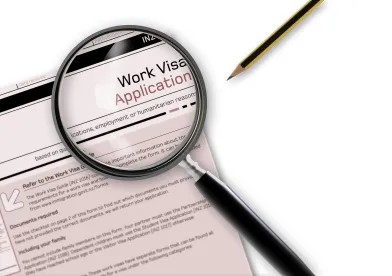The statutory limit of H-1Bs available per fiscal year is 65,000 for those who have a bachelor’s degree or equivalent, with 6,800 reserved for citizens of Chile and Singapore. An additional 20,000 are reserved for those who have earned a master’s or higher-level degree from an accredited U.S. university.
Since the implementation of the H-1B cap registration process in 2020, there has been an exceedingly high demand for H-1Bs, resulting in registrations that far outnumber the H-1B supply made available by the U.S. Congress. U.S. Citizenship and Immigration Services (USCIS) reports that the agency received 308,613 registrations for fiscal year (FY) 2022, 483,927 for FY 2023, and 780,884 in this year’s most recent registration cycle for FY 2024. Due to the increasingly difficult odds of selection for an H-1B in the lottery, those who are not selected may need to explore other options to maintain work authorization in the United States. Some common options are set forth below.
F-1 OPT
OPT (Optional Practical Training) allows for twelve months of work authorization for F-1 students following the completion of their degree programs. OPT work authorization requires the F-1 student to apply for OPT authorization directly with his or her school’s designated school official (DSO) and file for an I-765 Employment Authorization Document (EAD) with USCIS. The work opportunity must be directly related to the student’s degree.
F-1 STEM OPT
F-1 students who have completed a degree in a STEM (science, technology, engineering, and mathematics) field are eligible to apply for an additional twenty-four-month extension of their OPT work authorization, giving the F-1 student a total of thirty-six months of work authorization following the completion of the student’s degree.
Eligible F-1 STEM OPT degree programs are listed on the DHS Designated Degree Program List. To employ a student on STEM OPT, the employer must participate in E-Verify and must work with the F-1 student to complete an I-983 STEM Training Plan. The student is required to submit the Training Plan to his or her school DSO to apply for STEM OPT authorization, and then file for an I-765 with USCIS for a STEM EAD. The F-1 student must apply for a STEM EAD card within ninety days of the student’s OPT expiration. If the EAD is not issued before the OPT expires, the F-1 student will remain work authorized while the EAD is pending.
F-1 CPT
F-1 students who have exhausted their OPT or STEM OPT work authorization and who would like to pursue another degree program may have the option of going back to school and applying for Curricular Practical Training (CPT) work authorization. CPT is a type of work authorization issued to students while in school allowing them to receive training directly related to their fields of study. Students apply for CPT directly with their DSO; a separate EAD from USCIS is not required. The rules governing CPT are complex and requirements may differ between schools.
Cap-Exempt H-1B
Employers that are institutions of higher education (or an affiliated or related nonprofit entity), a nonprofit research organization, or a government research organization, are exempt from the annual H-1B quota. A cap-exempt employer may file an H-1B petition for a foreign national at any time of the year and are not required to go through the annual registration and lottery process. However, if the foreign national seeks to switch employment to a cap-subject employer, the individual will be required to go through the annual lottery process for the position.
L-1 for Intracompany Transferees
The L-1 category allows U.S. employers to temporarily transfer employees of a related foreign entity (a parent, subsidiary, or affiliate) to the United States. An employee must have worked for a related entity abroad for one full year of the three years preceding the employee’s entry into the United States.
The employee can qualify for either the L-1A category (for managers and executives) or the L-1B category (for those possessing specialized knowledge). The L-1A category has a seven-year maximum period of stay and the L-1B category allows for a five-year maximum period of stay.
O-1 for Individuals With Extraordinary Ability
The O-1 category is for foreign nationals who can demonstrate extraordinary ability in the sciences, arts, business, education, or athletics fields. Extraordinary ability is evidenced by documentation of achievements indicating that the foreign national is one of a small percentage who has risen to the top of his or her field.
The O-1 does not have a maximum period of stay.
TN for Nationals of Canada and Mexico
Under the United States-Mexico-Canada Agreement (USMCA), the TN category is available to Canadian and Mexican citizens who seek to temporarily enter the United States to work in certain professional occupations. The occupation must fall under one of the designated professional categories and the foreign national must possess the qualifications for the profession.
The TN does not have a maximum period of stay.
H-1B1 for Nationals of Chile or Singapore
The H-1B1 nonimmigrant category provides temporary employment authorization to nationals of Chile and Singapore who seek to work in a specialty occupation. The H-1B1 requires that the foreign national possess at least a bachelor’s degree or equivalent in a field of study that is directly related to the offered position.
The H-1B1 does not have a maximum period of stay.
E-3 for Nationals of Australia
The E-3 nonimmigrant category provides temporary employment authorization to nationals of Australia who seek to work in a specialty occupation. The E-3 requires that the foreign national possess at least a bachelor’s degree or equivalent in a field of study that is directly related to the offered position.
The E-3 does not have a maximum period of stay.
Work Authorization for Spouses of Nonimmigrants in H-1B, L, and E Status
Spouses of H-1B visa holders may apply for H-4 dependent status and an EAD if the H-1B spouse has reached a certain point in the permanent residency (green card) process.
Spouses of L-1, E-1, E-2, and E-3 visa holders holding dependent status are authorized for employment incident to status.
Key Takeaways
Foreign nationals who choose to explore and potentially secure other work authorization options are not precluded from future participation in the H-1B lottery registration process. The above options may be a temporary alternative while additional attempts in the H-1B lottery are made.





 />i
/>i
